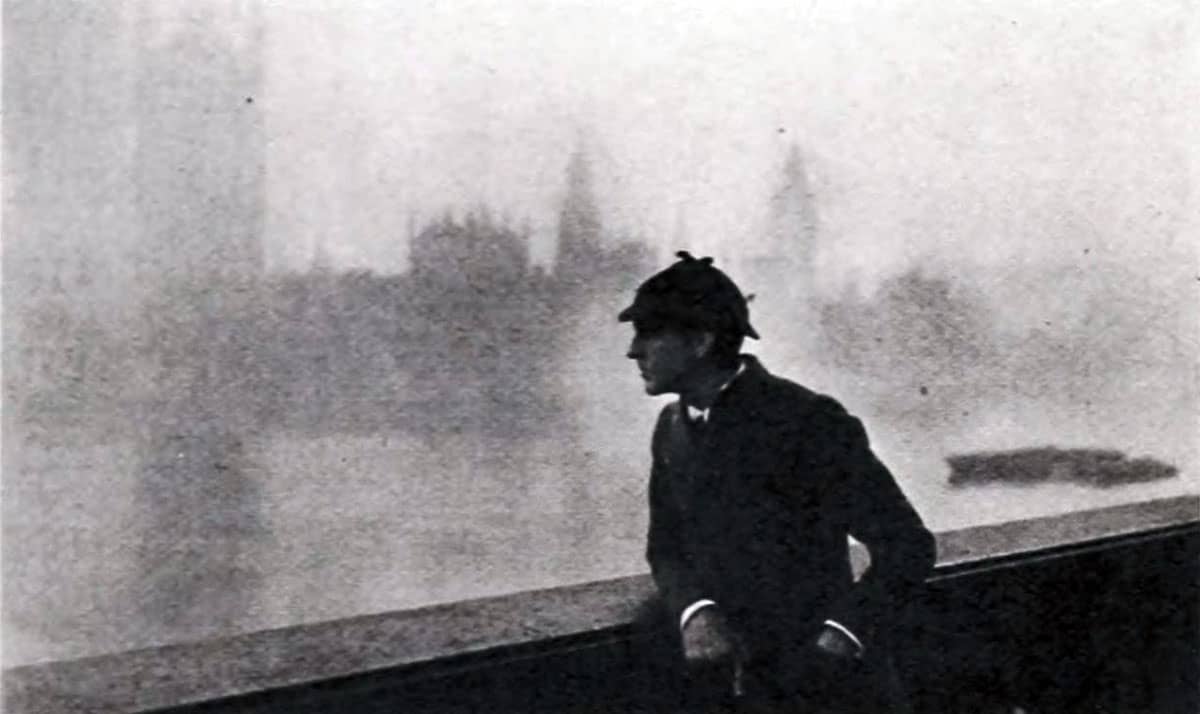Sherlock Holmes is arguably the world’s most famous fictional detective. And possibly the most fun. A classic character solving ingenious crimes from the heights of aristocracy to depths of the criminal underworld. What’s not to like?
I’ve been writing a fun short story set in Victorian London, so I wanted to know what made Arthur Conan Doyle’s stories so popular.
Despite the murders and burglaries being anything but formulaic, there’s a certain structure to Holmes’ investigations that we can learn from as writers. This structure makes a great basis for writing our own short stories with new detectives.
So how do you write a Sherlock Holmes style story? Read on, dear Watson!
Spoiler alert. I talk about the end of some Sherlock Holmes stories below…
Tip 1: Develop an intriguing character
All stories start with character. It doesn’t matter what the crime is, if your detective is as dull as dishwater, no one will want to read it.
Sherlock Holmes is notable for his skills of deduction and his encyclopaedic knowledge of everything from train timetables to curare. At the same time, he’s arrogant, a poor communicator and a terrible violin player. He’s interesting because he solves crimes almost impossible for the reader to grasp. We’re left in the same place as Watson and his clients – in awe of his intelligence.
So, what can we learn from his character? Your detective needs to have a mode of investigation that sets them apart from other detectives. Whether that’s the cynical fast talk of the hardboiled gumshoe or the dilettante fun of Phryne Fisher, they need to have a unique way on solving crimes. This will determine how they interact with the world, and how they win the day.
It’s also important to give your detective flaws too; it’s even better when their greatest asset is also their greatest flaw. For Holmes, his arrogance brings immediate conflict with his ability to investigate crimes, because his personal skills get in the way.
Tip 2: Start with the ingenious crime and work backwards
Ever since an orangutan perpetrated Poe’s Murders in the Rue Morgue, crime fiction has sought the most preposterous crimes to entertain the reader. The crimes in Sherlock Holmes stories are outrageous. These include:
- Murder by venomous snake in The Adventure of the Speckled Band
- A rock tied to the trigger of a revolver in The Problem of Thor Bridge
- A rare diamond in the belly of a Christmas goose in The Adventure of the Blue Carbuncle
- A cut gas pipe disguised by the smell of paint in The Adventure of Shoscombe Old Place
- Creating the illusion of a giant demonic hound in The Hound of the Baskervilles
To write a clever mystery, it’s better to start with how the crime was perpetrated and work backwards. What clues can you give to arrive at this conclusion? How will they find out what really happened?
Tip 3: Use the structure of a Holmesian story
Sherlock Holmes short stories take a common structure which we can use to shape our own work:
| The opening | Start at the detective’s home or HQ. Holmes is often doing something relevant to the investigation or forecasts the appearance of a client. |
| The summons | Visit/letter/summons by client. A detailed set up of the crime is given. Private discussion with offsider. |
| The investigation | Investigation at the location of the crime, often in disguise or under false pretences. Clues obtained. |
| The confrontation | Confrontation of the criminal. Mystery is revealed. Story concludes with the aftermath of the crime. |
If you are writing a longer story, such as a novel, the investigation and confrontation steps would be repeated with multiple clues and characters until reaching the solution to the crime.
Tip 4: Create a great offsider

I’d be remiss in not mentioning Watson, Sherlock Holmes’ perpetual offsider and the narrator for most Holmes adventures. Watson provides a perfect foil to Holmes’ arrogance. He is charming with the ladies, where Holmes has near zero interest in flirting. Watson also has a greater medical, sporting, and military knowledge than Holmes, whether or not Holmes would like to admit it. Watson’s patience and even his ignorance is helpful in solving crimes.
Look at the characteristics of your detective. Who could be a complimentary foil for your character? You don’t want their skills to overlap, but there also needs to be a reason that they’re working together.
Tip 5: Fill your world with colourful characters
While your detective might be a lone wolf, they can’t investigate a crime without interesting characters along the way. Sherlock Holmes stories have often hilarious or chilling characters from all facets of London. Think of:
- Professor Moriarty
- Irene Adler
- Mycroft Holmes
- Mrs Hudson
- Inspector Lestrade
Even the side characters have their own motivations and quirky personalities in the Sherlock Holmes universe. Make sure each person in your story occupies an original space in the story and try to make them as unusual as possible.
Conclusion
While I could crack some jokes about writing a Holmes style story being ‘Elementary!’, studying the structure of Sir Arthur Conan Doyle’s short stories has helped me become a better writer. I loved revisiting some of his short stories. There’s nothing better than reading the originals to learn from one of the best crime writers the world has ever seen – or at least, the most ingenious.
Photo credit: Wikimedia Commons Goldwyn Pictures / Public domain

Share your thoughts